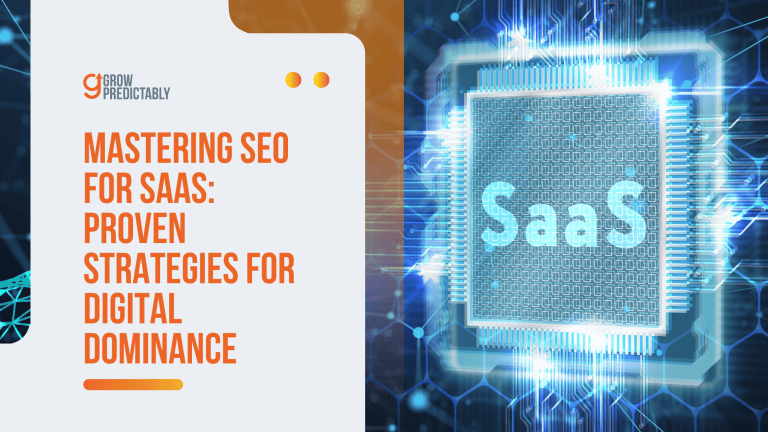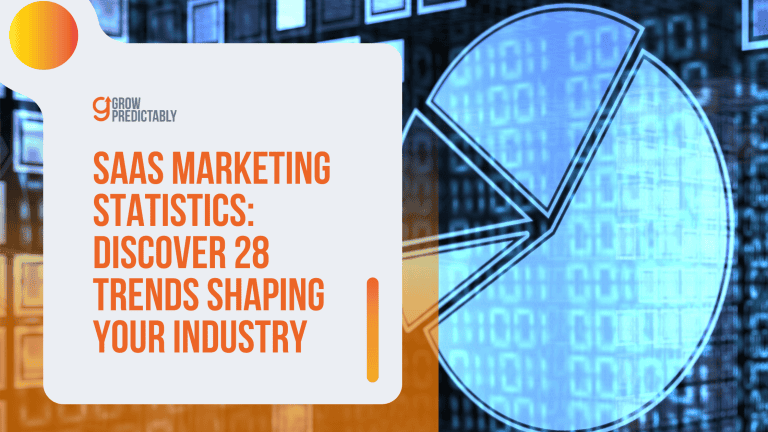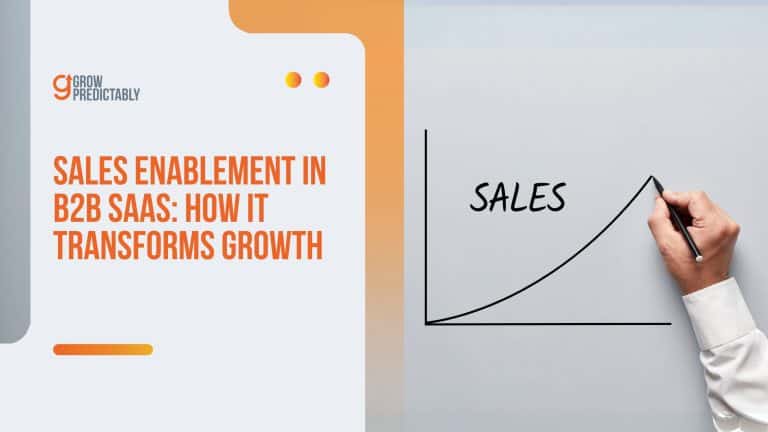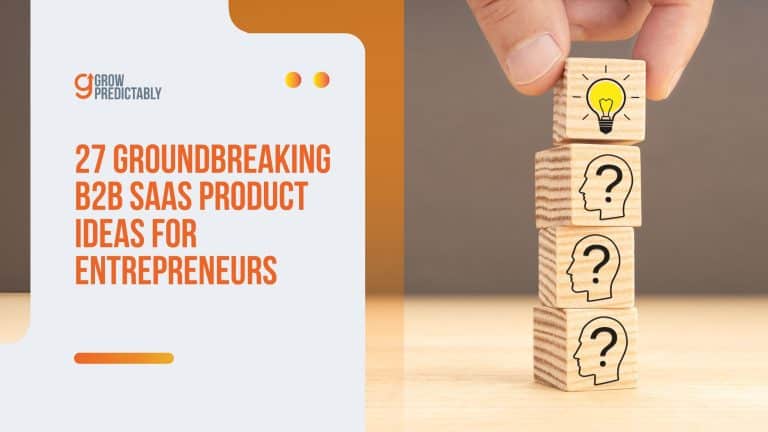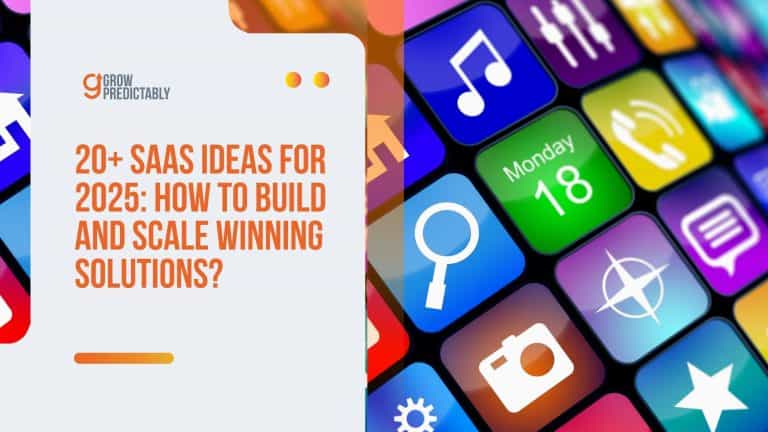How to Drive Conversions with Personalization in B2B Marketing
Your B2B marketing team sends 100 emails.
Only 2 people respond.
Your sales teams and account executives are wasting time on prospects who don’t fit.
And your conversion rates look like a dying plant.
Recent data from Salesforce shows personalized B2B campaigns generate 6x more transactions than generic ones.
Yet 82% of B2B companies still blast the same message to everyone.
Personalization isn’t complex.
It’s about showing prospects you understand their specific problems and have a clear solution.
When you nail this, they stop seeing you as another vendor and start treating you as their go-to advisor.
Want to know exactly how to make every prospect feel like you’re speaking directly to them?
Let’s fix your B2B personalization strategy right now.
Understanding Personalization in B2B Marketing
B2B buyers get bombarded with 121 business emails per day, according to Campaign Monitor.
They ignore most of them.
Not because the products are bad.
Because the messages don’t connect with their actual problems.
According to McKinsey’s latest B2B research, 72% of B2B buyers expect personalized interactions, yet only 20% of companies deliver them effectively.
Here’s what real personalization looks like in B2B:
- Using behavioral data to understand exactly when prospects need your solution
- Matching highly relevant content to their industry challenges, not just their job title
- Delivering insights based on their specific buying stage
- Customizing solutions around their unique business constraints
- Adapting communication style to match their decision-making process
Personalization isn’t just about making prospects feel special.
It’s about revenue.
Companies with advanced personalization strategies generate 40% more revenue than average players.
Accenture found that 91% of consumers are more likely to shop with brands that recognize them and provide relevant recommendations.
The most successful B2B companies view personalization as a strategic business approach, not just a marketing tactic.
They integrate customer data across every touchpoint.
They track engagement patterns.
They measure how different segments respond to different messages.
This systematic approach helps them:
- Reduce sales cycles by 20%
- Increase deal sizes by 3.5x
- Improve customer retention by 50%
- Generate 3x more responses to campaigns
Real personalization isn’t just adding someone’s name to an email.
It’s about understanding their business challenges and providing relevant solutions when they need them most.
When you nail this, you stop being another vendor and become their strategic advisor.
Define Your Personalization Goals and Understand Your B2B Audience
The most important thing in communication is to hear what isn’t being said.”
Peter Drucker
B2B personalization fails when it starts with tactics instead of people.
Every decision-maker who lands on your site brings their own context, challenges, and buying triggers.
Want to know exactly how to create personalized experiences that make every prospect feel like you’re speaking directly to them?
Let’s fix that using the Customer Avatar Canvas framework.
This isn’t about complicated tools.
It’s about knowing exactly who needs what information at each stage of their buying journey.
BUT FIRST, WHAT IS THE CUSTOMER AVATAR CANVAS?
The Customer Avatar Canvas is more than just another buyer persona tool – it’s your blueprint for understanding exactly who your customers are and what makes them tick.
Unlike basic frameworks that just collect demographics, this Canvas digs deeper into six key areas: who they are, what drives their purchases, what keeps them up at night, what they want to achieve, and most importantly, how your solution transforms their world from ‘before’ to ‘after’.
Think of it as your cheat sheet for creating messages that make prospects think, “These people actually get me.”
It’s the difference between guessing what your customers want and knowing exactly what makes them buy.
Know Who’s Buying Your Stuff
Different people care about different things.
In B2B, you’re never selling to just one person.
Each deal usually involves 6-10 key decision makers.
And each one needs to feel confident they’re making the right choice.
They all look at your solution differently based on their role, their goals, and what could go wrong if they choose wrong.
The trick?
Knowing exactly what keeps each person up at night.
When you nail this, your messages hit home instead of getting ignored.
Let’s break down what each person is thinking when they look at your solution:
➡️ The Boss (CEO, CFO):
- Main Concern: “Will this make or save us money?”
- What They Check: Numbers, ROI, bottom line impact
- What Scares Them: Wasting money, failed projects
- What They Need: Simple proof it works for companies like theirs
➡️ The Tech Team (IT Director, Engineers):
- Main Concern: “Will this break our current systems?”
- What They Check: Security, how it connects with their tools
- What Scares Them: Data breaches, system crashes
- What They Need: Clear tech specs and security details
➡️ The Daily Users (Team Leads, Staff):
- Main Concern: “Will this make my job easier?”
- What They Check: How easy it is to use, training time
- What Scares Them: Complex tools, more work
- What They Need: Simple how-to guides and quick wins
Show Them Real Value
Skip the fancy features.
Show them what your solution actually does.
Most companies fail to do this by focusing on themselves instead of prioritizing what matters to each person involved in the purchase.
Your job is to show each person exactly how their life gets better when your solution meets their individual needs:
➡️ For the Business:
- Money Made: New sales opportunities, keeping customers longer
- Money Saved: Less manual work, fewer mistakes
- Getting Ahead: Beating competitors, doing things better
- Staying Safe: Following rules, keeping data secure
➡️ For the Tech Folks:
- Easy Setup: How it fits with their current tools
- Rock-Solid Security: How it keeps data safe
- Smooth Running: How fast and reliable it is
- Clear Path Forward: How to get started without headaches
➡️ For the Daily Users:
- Daily Benefits: What tasks become easier
- Team Impact: How it helps everyone work better
- What They Need: Time, people, and support required
- Success Signs: How they know it’s working
Give Them What They Need, When They Need It
People need different information at different times.
Most marketing tries to sell too soon. Instead, match your information to where people are in their buying process.
B2B buyers spend 17% of their time talking to potential vendors and 83% of their time researching independently.
Your content needs to help them make progress even when they’re not talking to your sales team.
Here’s what works at each stage:
➡️ When They’re Just Looking:
- Real stories from their industry
- Problems you’ve solved for others
- What happens if they do nothing
- Quick wins they could get
➡️ When They’re Comparing Options:
- Clear comparison charts
- Money-saving calculations
- Tech requirements check
- Timeline and resource needs
➡️ When They’re Ready to Buy:
- Step-by-step setup plan
- Training roadmap
- Success tracking plan
- Future growth options
Here’s the thing: You don’t need expensive software to do this right.
You need to analyze customer data to understand what keeps these people up at night.
Then show them you can fix it.
Think about it this way: Would you rather get a generic email saying “Our solution helps companies succeed” or one that says “Here’s how we helped three companies in your industry cut their report time from 5 hours to 30 minutes”?
That’s personalization that works.
Everything else is just noise.
Segment Your Audience with Precision Using Data-Driven Frameworks
Most B2B companies collect tons of data but don’t use it right.
Let’s fix that.
Segmentation isn’t about fancy labels – it’s about knowing exactly who’s ready to buy and why. Your prospects tell you everything about their buying intentions through their customer behaviors:
Find Your Money-Making Segments
First, you need to know who actually buys your stuff.
Not just job titles – real patterns that show who closes and who doesn’t, and how you can foster stronger relationships.
Most B2B deals have three types of buyers that matter:
➡️ Decision Makers Who Control Money:
- What They Care About: Hard numbers and business impact
- How They Evaluate: ROI calculations and peer case studies
- When They Show Up: Usually late in the deal
- What Makes Them Buy: Clear profit potential and low risk
➡️ Technical People Who Make It Work:
- What They Care About: Integration and implementation
- How They Evaluate: Technical docs and security details
- When They Show Up: Early for technical validation
- What Makes Them Buy: Proven reliability and easy setup
➡️ Users Who Live With It Daily:
- What They Care About: Making their job easier
- How They Evaluate: Interface and features
- When They Show Up: Throughout the process
- What Makes Them Buy: Simple workflows and clear benefits
Watch What They Do
Ignore what people say.
Watch what they do.
Your prospects tell you everything about their buying intentions through their actions:
➡️ High-Intent Signals:
- Pricing Page Views: Multiple visits mean key decision makers are running numbers
- Feature Deep Dives: They’re imagining how it fits their workflow
- Content Downloads: They’re building internal business cases
- Demo Requests: They’re ready for serious evaluation
➡️ Buying Stage Signals:
- Blog Reading: Just starting research
- Case Study Views: Comparing solutions
- Technical Docs: Deep in evaluation
- Pricing Calculator Use: Close to deciding
➡️ Role-Based Behavior:
- C-Level: Quick overview pages, ROI content
- Technical: API docs, security whitepapers
- Users: How-to guides, feature demos
Turn Insights Into Action
Here’s where most companies mess up.
They collect data but don’t use it.
Real segmentation means changing what you do based on what you learn:
➡️ For Early Stage Prospects:
- Send personalized emails with industry-specific content
- Share relevant case studies
- Offer high-level guides
- Keep it educational
➡️ For Active Evaluators:
- Provide detailed comparisons
- Share technical documentation
- Offer personalized demos
- Focus on their specific needs
➡️ For Ready-to-Buy Signs:
- Send implementation plans
- Share onboarding details
- Offer customer references
- Focus on next steps
Remember: Good segmentation isn’t about creating perfect categories.
It’s about knowing enough to send the right message to the right person at the right time.
Start simple.
Watch what works.
Make it better.
The companies that nail this see shorter sales cycles, higher close rates, and bigger deals.
Not because they’re smarter – because they pay attention to what their prospects actually care about.
Craft Personalized Content Aligned to Buyer Journey Stages
Personalization — it is not about first/last name. It’s about relevant content.”
Dan Jak
Modern B2B buying isn’t linear.
Your prospects jump between stages, loop back, and involve multiple decision-makers.
Each person needs relevant information at different times.
Missing these signals kills deals before they start.
The Customer Value Journey transforms how we think about B2B buying.
WHAT IS THE CUSTOMER VALUE JOURNEY?
The Customer Value Journey (CVJ) is a strategic framework that maps how strangers become raving fans of your brand.
Unlike traditional funnels that focus on quick sales, CVJ shows you exactly how to build lasting relationships with customers through eight key stages: Awareness, Engagement, Subscribe, Convert, Excite, Ascend, Advocate, and Promote.
Think of it as your blueprint for turning cold prospects into loyal customers who actively recommend your business.
It’s not just about making sales – it’s about creating experiences that keep customers coming back and bringing others with them.
Awareness Stage: First Impressions Matter
More than just getting attention.
The awareness stage is about showing up where your prospects already look for answers.
The CVJ framework shows us a critical shift:
➡️ Don’t start with your product. Start with their problems:
- Industry-specific challenges they’re facing
- Common bottlenecks in their role
- Questions they’re asking in search
- Platforms where they seek answers
- Conversations they’re having with peers
➡️ Personalization here means:
- Creating highly relevant content that speaks to specific industries
- Customizing ad messages by company size
- Tailoring social content to role-specific pain points
- Adapting messaging based on market maturity
- Matching their technical sophistication level
Engagement Stage: Building Interest
This is where surface-level attention turns into genuine interest.
The CVJ shows us that engagement isn’t about more content – it’s about better content:
➡️ Your prospects need to see themselves in your material through personalized experiences:
- Case studies from their specific sector
- Solutions mapped to their tech stack
- Outcomes relevant to their size
- Content that matches their expertise
- Examples that fit their budget range
➡️ Smart personalization strategies:
- Dynamic website content based on industry
- Interactive tools calibrated to their size
- Webinars segmented by experience level
- Resources filtered by role and challenge
- Communication matched to their style
Subscribe Stage: The Trust Exchange
This is where prospects decide if you’re worth their time.
The CVJ framework reveals that subscription isn’t just about email addresses:
➡️ It’s about delivering value that matches their needs:
- Role-specific newsletters
- Industry-focused updates
- Custom research reports
- Personalized resource libraries
- Tailored learning paths
➡️ Your personalization should focus on:
- Segmenting and creating customized content by job function
- Customizing formats by preference
- Adapting frequency to engagement
- Matching depth to expertise
- Aligning resources to goals
Convert Stage: Making it Easy to Start
The CVJ shows that conversion isn’t about pushing for big commitments.
It’s about removing friction:
➡️ Focus on low-risk entry points to enhance the buying experience:
- Industry-specific trials
- Role-based demos
- Custom pilot programs
- Tailored starter packages
- Personalized onboarding paths
➡️ Personalization priorities:
- Matching offers to budget authority
- Adapting trials to use case
- Customizing demo scripts
- Tailoring success metrics
- Adjusting timelines to urgency
Excite Stage: Exceeding Expectations
This is where you turn users into champions and foster customer loyalty.
The CVJ framework emphasizes creating “wow” moments:
➡️ Every customer needs different wins:
- Technical users need efficiency gains
- Executives need strategic wins
- Managers need team victories
- Analysts need data insights
- Operators need smooth processes
➡️ Personalization opportunities:
- Custom success templates
- Personalized training paths
- Role-specific quick wins
- Industry benchmarks
- Tailored best practices
Ascend Stage: Growing Together
The CVJ shows that growth comes from alignment.
This stage is about scaling with your customers and building long term relationships:
➡️ Focus on their expansion path:
- Department-specific features
- Industry vertical solutions
- Role-based upgrades
- Team collaboration tools
- Enterprise capabilities
➡️ Personalization strategies:
- Custom growth roadmaps
- Tailored upsell timing
- Personalized feature releases
- Adaptive pricing models
- Scaled support levels
Advocate Stage: Creating Champions
The CVJ reveals that advocacy isn’t automatic.
It’s earned through consistent value:
➡️ Turn satisfaction into building stronger relationships and promotion:
- Industry-specific success stories
- Role-based testimonials
- Peer recommendation programs
- Custom referral tracks
- Personalized case studies
➡️ Your advocacy program should:
- Match incentives to motivations
- Customize recognition programs
- Tailor sharing opportunities
- Adapt rewards to preferences
- Personalize advocacy paths
Promote Stage: Amplifying Success
The final CVJ stage shows how to turn advocacy into growth:
➡️ Enable natural promotion and customer engagement:
- Sector-specific content sharing
- Role-based success metrics
- Custom promotion tools
- Personalized social sharing
- Tailored referral programs
➡️ Focus your personalization on:
- Making sharing relevant to their peers
- Customizing promotion platforms
- Adapting messages to their audience
- Matching content to their influence
- Tailoring rewards to their interests
Remember: The CVJ isn’t linear.
Your prospects bounce between stages, involve different stakeholders, and take unique paths.
Your personalization strategy needs to be flexible enough to support their actual journey, not force them into your preferred path.
Success comes from understanding exactly where each prospect is in their journey and delivering precisely what they need to move forward, in their way, at their pace.
Leverage Technology and AI to Scale Personalization
Let’s skip the hype about artificial intelligence changing everything.
Here’s what actually works when scaling personalization in B2B.
You don’t need 20 tools.
You need the right ones working together.
Start With The Basics That Work
Most companies jump straight to advanced AI tools, such as generative AI, before establishing the foundational elements.
Here’s what you actually need:
➡️ Data Collection That Makes Sense:
- Track what matters: Page views and downloads won’t close deals
- Watch buying signals: Demo requests, pricing page visits, technical doc reads
- Note role patterns: What CTOs look at vs what CFOs care about
- Follow the money: Which actions led to closed deals
➡️ Simple examples that work:
- A CTO spent 10 minutes on your security page? Send technical specs
- A CFO downloaded ROI calculator? Share industry case studies
- A Manager watched product videos? Offer a focused demo
Make Your Tools Work Together
You don’t need every shiny new tool.
You need the right ones talking to each other, leveraging real-time personalization to enhance user engagement:
➡️ The Must-Haves:
- CRM (like HubSpot or Salesforce): Tracks who’s who
- Analytics (like Google Analytics or Mixpanel): Shows what they do
- Email Platform (like Customer.io or Mailchimp): Delivers personalized messages
- Content Management: Stores and serves your content
➡️ Why this matters:
- Know exactly who’s looking at what
- Send the right content automatically
- Track what works (and what doesn’t)
- Scale what’s working without more people
Turn Data Into Action
Here’s where most companies drop the ball.
They collect data but don’t use it.
Here’s how to make it work:
➡️ For First-Time Visitors:
- Show industry-specific content based on their company
- Highlight solutions for their role
- Share relevant case studies automatically
- Keep it focused on their likely problems
➡️ For Active Prospects:
- Serve technical docs to technical viewers
- Show ROI calculators to financial decision makers
- Offer role-specific product tours
- Automate follow-ups based on what they view
➡️ For Ready-to-Buy Signs:
- Send implementation guides automatically
- Share relevant customer stories
- Offer direct booking links to sales
- Connect them with similar customers
Remember: The goal isn’t to remove the human touch.
It’s to ensure that every prospect receives the right information at the right time – even when your team is asleep, ensuring that promises made in sales are delivered.
Start simple:
- Track what content works for each role
- Set up basic automation rules
- Test and improve what works
- Scale gradually
Don’t try to automate everything at once.
Pick one thing that takes up too much time (like sending follow-up emails) and make that better first.
Measure Success and Optimize Your Personalization Strategy
Marketers have to stop reporting on activities and start reporting on business outcomes.”
Allen Gannett
Most B2B companies track vanity metrics that look good in reports but don’t show if you’re making money.
You need to know if your effective personalization efforts are helping or hurting during that time.
Here’s what I’ve learned working with SaaS companies: fancy dashboards mean nothing if deals aren’t closing faster and bigger.
Track What Makes Money
Skip the fluff metrics.
According to Gartner’s research, B2B buyers spend 83% of their buying journey evaluating independently.
You need to know if your personalization efforts are helping or hurting during that time:
Direct Revenue Impact and Customer Experiences:
➡️ Conversion Velocity
- How fast leads move through each stage
- Which content speeds up decisions
- Where people get stuck most often
- What triggers faster closes
- Which segments move quickest
➡️Deal Quality
- Average contract value by segment
- Upsell rates with personalized content
- Cross-sell success by buyer type
- Expansion timing patterns
- Customer lifetime value trends
➡️ Resource Efficiency
- Cost per qualified opportunity
- Marketing spend ROI by segment
- Sales time per closed deal
- Content production efficiency
- Tool stack effectiveness
Watch The Warning Signs
Problems show up way before lost deals.
Here’s what successful companies track to understand customer behaviors:
Early Warning Metrics:
➡️ Engagement Patterns
- Time spent on key pages
- Content download completion
- Return visit frequency
- Tool and calculator usage
- Question complexity levels
➡️Sales Signals
- Demo show-up rates
- Sales call duration
- Follow-up response times
- Technical question types
- Competitor mentions
➡️ Customer Behavior
- Feature adoption speed
- Support ticket themes
- Training completion rates
- User expansion patterns
- Advocacy program engagement
⚠️ What these tell you:
- High demo no-shows often mean poor qualification, not bad leads
- Short sales calls usually indicate wrong message timing
- Basic questions late in the cycle show bad content mapping
- Slow feature adoption suggests wrong user targeting
- Low advocacy rates reveal missed personalization opportunities
Fix What’s Broken
When metrics show problems, here’s how to fix them systematically:
Content Alignment and Relevance:
➡️ Role-Based Issues
- CTOs leaving fast? Add technical depth earlier
- CFOs not engaging? Lead with ROI impact
- End users dropping off? Show quick wins
- Multiple stakeholders? Layer content depth
- Decision makers skimming? Highlight key points
➡️ Journey Stage Fixes
- Early stage: Focus on problem validation
- Mid stage: Emphasize solution proof
- Late stage: Provide implementation clarity
- Post sale: Share success acceleration
- Expansion: Target growth opportunities
➡️ Channel Optimization
- Email: Test subject line personalization
- Website: Adjust content by visitor type
- Social: Match message to platform
- Webinars: Segment by expertise level
- Sales collateral: Customize by deal stage
Remember: Good metrics show problems.
Great metrics show solutions.
Focus on numbers that help you make better decisions:
Daily Tracking:
- New lead quality scores
- Demo completion rates
- Content engagement depth
- Sales call outcomes
- Customer success signals
Weekly Analysis:
- Conversion trends by segment
- Content performance patterns
- Sales cycle velocity
- Deal size variations
- Churn warning signs
Monthly Review:
- Customer acquisition costs
- Lifetime value trends
- Revenue impact by segment
- Resource allocation ROI
- Tool stack effectiveness
The goal isn’t to track everything.
It’s to track what helps you make better decisions about:
- Where to focus your content creation
- How to adjust your targeting
- When to change your message
- What to fix in your funnel
- Which segments need attention
Start with one key metric that matters most to your business right now.
Get that right.
Then expand your tracking as you prove what works.
FAQs
Turn Personalization from Tactic to Transformation!
Throughout this guide, you have unpacked how to define bold personalization goals, build accurate customer avatars, segment intelligently, align content to the buyer’s journey, leverage scalable technology, measure what really matters, and troubleshoot with precision.
These are the foundational steps for B2B marketers who want more than clicks—they want conversions that drive revenue.
But let’s be real—it’s not just about boosting metrics.
It’s about building trust with your next CFO, guiding a CTO through complexity, and empowering Product Managers to say “yes” faster.
That feeling when your content finally aligns with what your audience truly needs and reinforces your brand?
That’s the heart of personalization done right.
💡 Want to go deeper? Explore Mutiny’s ABM Playbooks or HubSpot’s Smart Content Masterclass for real-world examples at scale.
💬 What’s the biggest personalization gap you’ve spotted in your current process? Let’s talk about it in the comments.
Because in a world of automation and AI, human-centric personalization isn’t optional—it’s your competitive edge.
Start small, test boldly, and scale what works.



